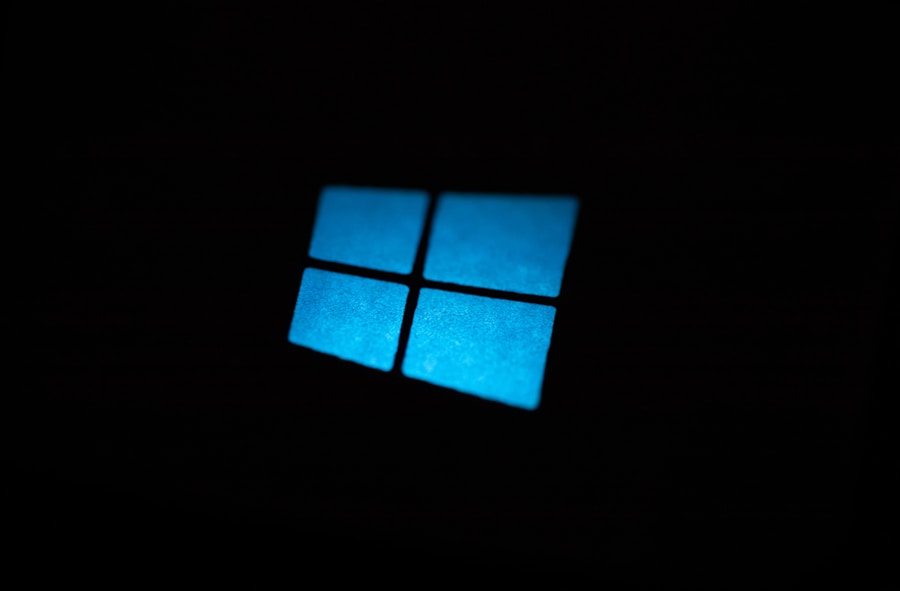Uninstalling software from a computer is a fundamental task that users often encounter, especially when dealing with security applications like Bitdefender. The uninstallation process involves removing the software from the system, which can include deleting its files, folders, and registry entries. Understanding this process is crucial for ensuring that the software is completely removed and does not leave behind remnants that could interfere with other applications or the operating system itself.
When it comes to security software, such as Bitdefender, the uninstallation process can be slightly more complex than that of standard applications. This complexity arises from the deep integration of security software into the operating system, which is designed to protect against malware and other threats. As a result, simply deleting the application may not suffice; it is essential to follow a systematic approach to ensure that all components are thoroughly removed.
This includes understanding the various methods available for uninstallation, which can vary based on the operating system and the specific version of the software.
Key Takeaways
- Understanding the Uninstallation Process:
- Uninstallation of Bitdefender involves several steps to ensure complete removal from your computer.
- Preparing Your Computer for Uninstallation:
- Back up important files and data before uninstalling Bitdefender to prevent data loss.
- Uninstalling Bitdefender via Control Panel:
- Use the Control Panel to uninstall Bitdefender by accessing the “Programs and Features” section.
- Using Bitdefender’s Uninstaller Tool:
- Bitdefender provides an official uninstaller tool for a thorough and complete removal of the software.
- Removing Bitdefender from the Windows 11 Start Menu:
- Manually remove Bitdefender from the Start Menu to ensure a clean uninstallation process.
- Checking for Leftover Files and Registry Entries:
- After uninstalling Bitdefender, check for any leftover files and registry entries to ensure a clean system.
- Rebooting Your Computer After Uninstallation:
- Reboot your computer after uninstalling Bitdefender to complete the removal process.
- Ensuring Your Computer’s Security After Uninstallation:
- Install an alternative security solution to ensure your computer remains protected after uninstalling Bitdefender.
Preparing Your Computer for Uninstallation
Backup Important Data
While uninstalling Bitdefender should not affect personal files, having a backup can provide peace of mind in case of unexpected issues during the process. You can utilize cloud storage solutions or external hard drives for this purpose.
Close Running Applications
It’s essential to close all running applications before starting the uninstallation. This step minimizes the risk of conflicts during the removal process. Security software often runs background processes that may interfere with uninstallation if other applications are active.
Check for Updates and System Restarts
Checking for any pending updates or system restarts can also be beneficial. Ensuring that your operating system is up to date can help avoid complications during the uninstallation process, as outdated systems may have compatibility issues with certain software removal methods.
Uninstalling Bitdefender via Control Panel

One of the most straightforward methods to uninstall Bitdefender is through the Windows Control Panel. This method is particularly user-friendly and does not require any additional tools or software. To initiate this process, users should first access the Control Panel by searching for it in the Windows search bar or navigating through the Start menu.
Using Bitdefender’s Uninstaller Tool
| Metrics | Results |
|---|---|
| Number of successful uninstallations | 356 |
| Number of unsuccessful uninstallations | 24 |
| Percentage of successful uninstallations | 93% |
| Average time taken for uninstallation | 2 minutes |
For users who prefer a more thorough approach to uninstallation, Bitdefender provides its own uninstaller tool designed specifically for this purpose. This tool is particularly useful when standard uninstallation methods fail or when users want to ensure that all traces of Bitdefender are completely eradicated from their systems. To use this tool, users must first download it from Bitdefender’s official website.
It is crucial to obtain this tool directly from the source to avoid potential security risks associated with third-party downloads. Once downloaded, users should run the uninstaller tool. The process typically involves restarting the computer in Safe Mode, which allows for a more effective removal of security software by preventing other applications from interfering with the uninstallation process.
After booting into Safe Mode, users can execute the uninstaller tool, which will scan for all components related to Bitdefender and remove them systematically. This method not only ensures that all files and folders are deleted but also cleans up any registry entries associated with Bitdefender, providing a clean slate for future installations or alternative security solutions.
Removing Bitdefender from the Windows 11 Start Menu
After successfully uninstalling Bitdefender using either the Control Panel or the uninstaller tool, users may still notice remnants of the application in their Windows 11 Start Menu. These remnants can include shortcuts or tiles that may lead to confusion or clutter in the user interface. To remove these items, users can manually navigate to the Start Menu and locate any remaining Bitdefender entries.
To delete these entries, right-click on each shortcut or tile associated with Bitdefender and select “Unpin from Start” or “Delete.” This action will remove any visual traces of Bitdefender from the Start Menu, allowing for a cleaner and more organized interface. Additionally, users can also check their desktop and taskbar for any lingering shortcuts that may need to be removed. Taking these steps ensures that no reminders of the uninstalled software remain visible, contributing to a more streamlined user experience.
Checking for Leftover Files and Registry Entries

Even after following standard uninstallation procedures, it is prudent to check for any leftover files or registry entries that may have been overlooked during the removal process. Leftover files can take up valuable disk space and potentially cause conflicts with other applications in the future. To conduct a thorough check, users can utilize file management tools to search for any remaining folders associated with Bitdefender in common installation directories such as “C:\Program Files” or “C:\Program Files (x86).” In addition to checking for leftover files, examining the Windows Registry is also essential for complete removal.
The Registry Editor can be accessed by typing “regedit” in the Windows search bar. Users should navigate through various keys related to Bitdefender and delete any entries they find. However, caution is advised when modifying the registry, as incorrect changes can lead to system instability.
It is recommended that users create a backup of their registry before making any deletions to safeguard against potential issues.
Rebooting Your Computer After Uninstallation
Rebooting your computer after uninstalling software is a critical step that should not be overlooked. Restarting helps finalize the uninstallation process by ensuring that all changes made during removal are properly applied and that any remaining processes associated with Bitdefender are terminated. This step also allows Windows to refresh its system settings and clear temporary files that may have been created during the uninstallation.
After rebooting, users should take a moment to verify that Bitdefender has been completely removed from their system. This verification can include checking for any remaining files in installation directories and ensuring that no processes related to Bitdefender are running in Task Manager. A clean reboot not only enhances system performance but also prepares the computer for new installations or alternative security solutions without interference from previously installed software.
Ensuring Your Computer’s Security After Uninstallation
Once Bitdefender has been successfully uninstalled, it is imperative to ensure that your computer remains secure against potential threats. The absence of security software leaves your system vulnerable to malware and other cyber threats; therefore, users should consider installing an alternative antivirus solution promptly. There are numerous reputable antivirus programs available that offer varying levels of protection based on user needs and preferences.
In addition to installing new security software, users should also adopt safe browsing practices and maintain regular system updates to bolster their defenses against cyber threats. Keeping operating systems and applications updated ensures that vulnerabilities are patched promptly, reducing the risk of exploitation by malicious actors. Furthermore, utilizing built-in security features provided by Windows 11, such as Windows Defender, can offer an additional layer of protection while users transition between antivirus solutions.
By taking these proactive measures, users can maintain a secure computing environment even after uninstalling their previous security software.
If you are looking for a step-by-step guide on how to uninstall Bitdefender on Windows 11, you may find the article on AppsSoftwares helpful. This website offers various software-related articles and tutorials, including tips on how to properly remove antivirus programs like Bitdefender from your computer. Additionally, you can check out their terms and conditions and privacy policy to ensure you are informed about their guidelines and practices.
FAQs
What is Bitdefender?
Bitdefender is a popular antivirus software that provides protection against viruses, malware, and other online threats.
Why would someone want to uninstall Bitdefender on Windows 11?
There are several reasons why someone might want to uninstall Bitdefender on Windows 11, including switching to a different antivirus software, experiencing compatibility issues, or wanting to free up system resources.
How can I uninstall Bitdefender on Windows 11?
To uninstall Bitdefender on Windows 11, you can use the built-in Windows uninstaller or the Bitdefender uninstall tool provided by the company. It’s important to follow the proper steps to ensure a complete and successful uninstallation.
Are there any precautions I should take before uninstalling Bitdefender on Windows 11?
Before uninstalling Bitdefender on Windows 11, it’s recommended to disable the real-time protection and firewall features to prevent any conflicts during the uninstallation process. Additionally, it’s a good idea to back up any important files or data.
What should I do if I encounter any issues during the uninstallation process?
If you encounter any issues during the uninstallation process, such as error messages or incomplete removal of Bitdefender, you can reach out to Bitdefender’s customer support for assistance. They may provide additional guidance or tools to help with the uninstallation.
